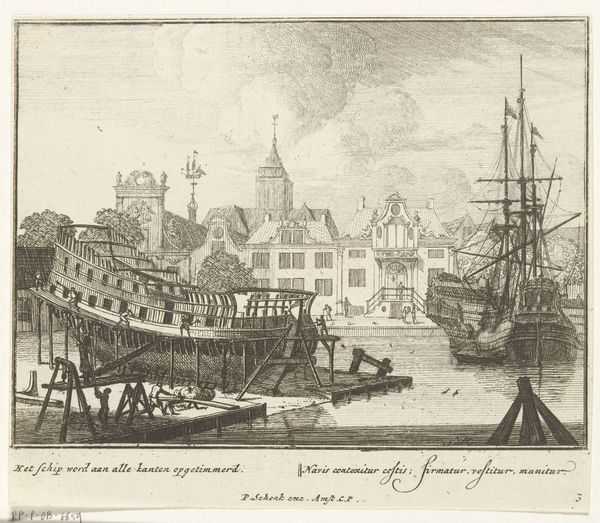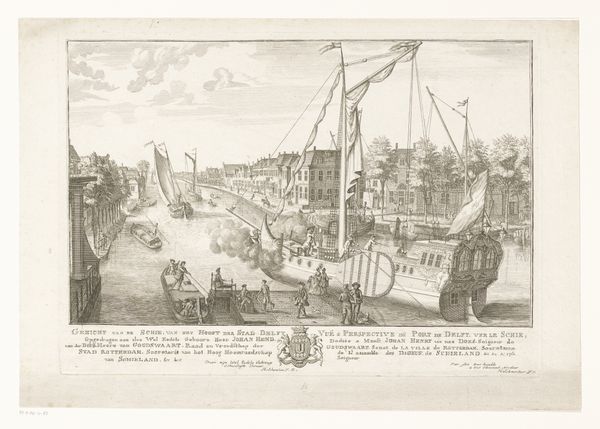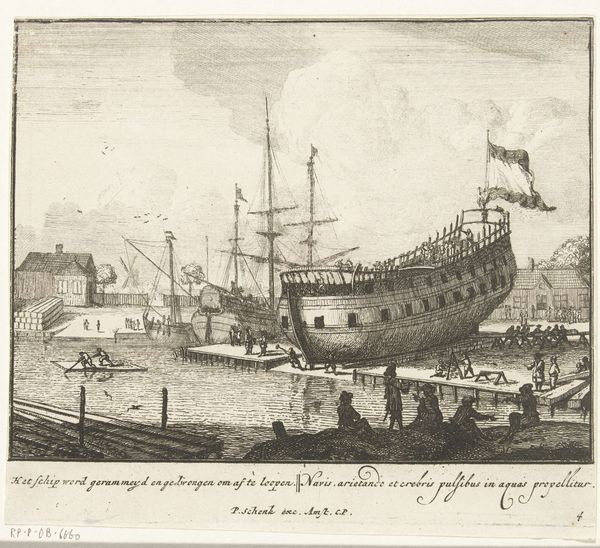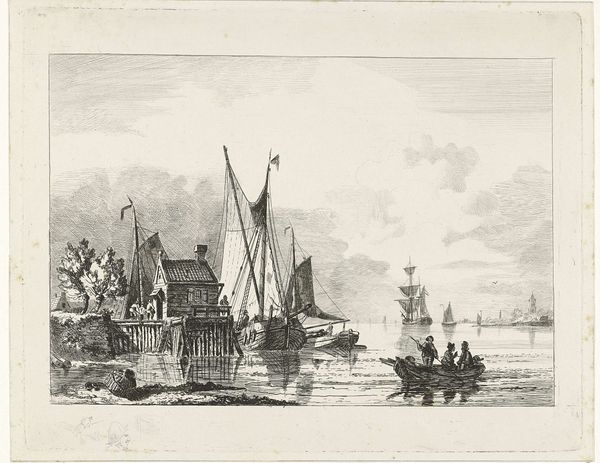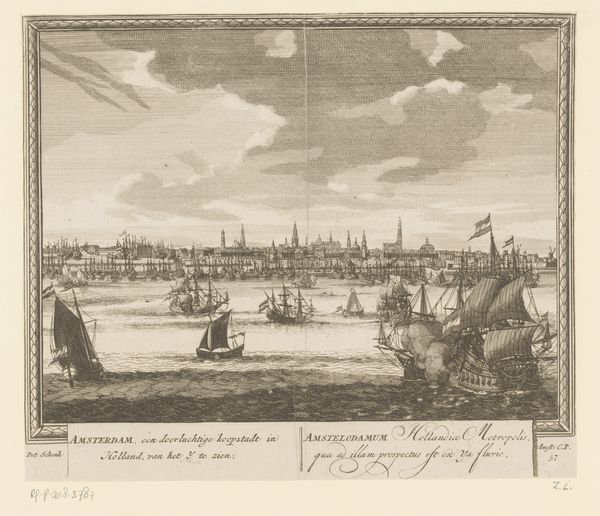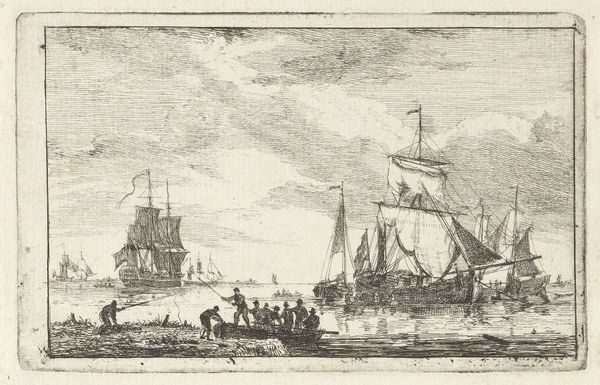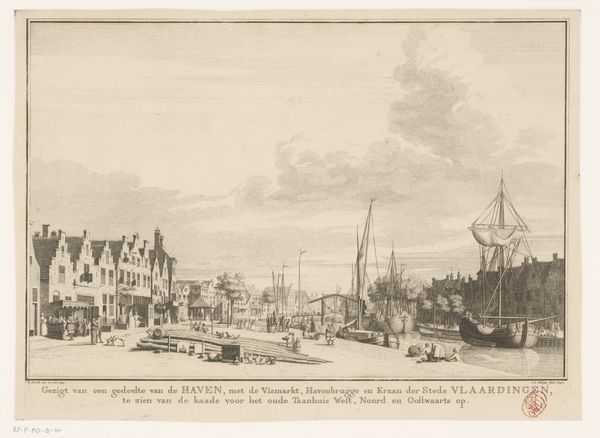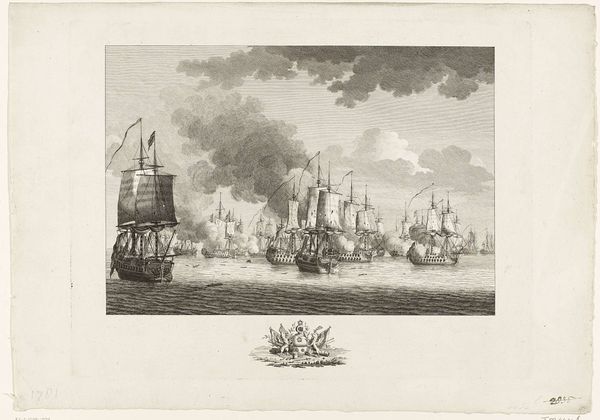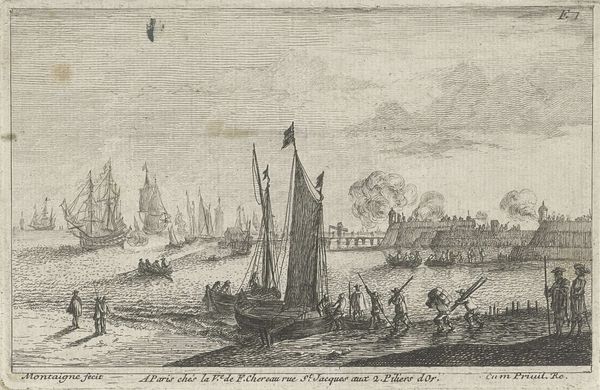
print, engraving
#
dutch-golden-age
# print
#
landscape
#
cityscape
#
engraving
Dimensions: height 164 mm, width 190 mm
Copyright: Rijks Museum: Open Domain
Curator: Immediately, I’m struck by the composition, the layering of the boats, receding into the background—a testament to linear perspective. Editor: The date of this engraving, circa 1700, gives us a window into the economic power and global reach of the Dutch Republic. Consider this print, titled "De opbouw van het schip, plaat nr. 2," as an important document connecting maritime power to wealth accumulation in Amsterdam. Curator: Note the details! The textures are fascinating given it's an engraving: the smooth hulls contrasting with the intricate rigging, and how light dances on the water, especially remarkable given it's just lines on paper. Editor: The shipyards depicted in van der Meulen's print highlight the infrastructure necessary for colonial projects, connecting local labor and expertise to transatlantic trade. Let’s also keep in mind that those who were able to afford these artworks certainly participated in or benefited from colonialism in some way, from merchants and investors to the political class. Curator: True, but also consider the image itself. See how the eye is drawn to the geometric precision of the hull, the implied volume of the sails; pure structure communicating function and elegance. Editor: And by extension, the "elegance" of Dutch imperial ambitions is intrinsically linked to systems of forced labor and resource extraction abroad. I think it's important to read van der Meulen's composition as not just a representation of Dutch ingenuity but as evidence of a much larger history of exploitation. We need to confront the uncomfortable truth embedded within even the most seemingly innocuous landscapes of the Dutch Golden Age. Curator: Fair, although when viewing this print, the artist's technical skill cannot be dismissed entirely from view. There's also a quiet stillness despite the activity depicted. Editor: Thinking critically about this artwork reveals its complexities and connections to broader social issues. The aesthetic enjoyment must exist in parallel with questions around who benefited from such maritime prowess and who bore the cost. Curator: It certainly underscores that the artwork and broader maritime industry should be further examined and seen as part of a much more intertwined and complex history than traditionally explored.
Comments
No comments
Be the first to comment and join the conversation on the ultimate creative platform.

